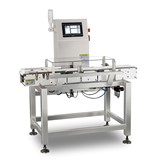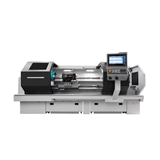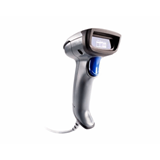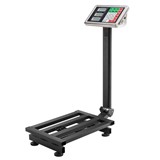Looking at curtainsider trucks for sale? Learn about finance, payloads, and what to check before you buy in this trusted Australian truck guide.
Key takeaways
- Curtainsider trucks dominate Australian freight: Over 70% of palletised freight in Australia moves by truck, with curtainsiders preferred for their flexibility and fast loading.
- Prices vary by configuration: New curtainsider trucks typically cost $180,000–$350,000; used options start from $40,000 depending on age, size, and brand.
- Common sizes and payloads:
- Rigid curtainsiders: 6–12 pallets, payload up to 12 tonnes.
- Semi-trailer curtainsiders: 22–34 pallets, payload up to 24 tonnes.
- Key buying considerations: Load capacity, loading access, vehicle dimensions, chassis compatibility, curtain mechanisms, and NHVR mass and dimension compliance.
- Operating costs include: Fuel ($0.28/km), insurance ($3,000/year), tyres, and scheduled maintenance.
- Financing options: Lease, chattel mortgage, and hire purchase, with interest rates from 7.5% to 11.5% p.a. based on credit.
- Essential certifications: Trucks must comply with Australian Design Rules (ADRs), NHVR load restraint guides, and state-based registration requirements.
- Customisation options: Enhance value with curtain branding, upgraded flooring, or load restraint rails tailored to your freight needs.
- State-by-state road access: NSW, VIC, and QLD have unique curfews, permit rules, and inspections.
- Driver training: Teach correct curtain handling, load restraint, and WHS-aligned safety checks to minimise damage and ensure compliance.
Introduction
Curtainsider trucks are one of the most versatile freight transport solutions in Australia, ideal for fast loading/unloading and adaptable to a wide range of freight types. Whether you're hauling pallets, oversized items, or general freight, curtainsiders offer unmatched access and efficiency.
This comprehensive guide will walk you through everything you need to know before buying a curtainsider truck in Australia, covering types, pricing, operation, parts, maintenance, financing, compliance, and answers to common buyer questions. Whether you're a small transport operator or a national fleet manager, this guide is tailored to help you make the most informed purchasing decision.
Types of curtainsider trucks in Australia
Curtainsider trucks come in several configurations tailored to freight type, route demands, and fleet size. Here's a breakdown of the main types:
1. Rigid curtainsider trucks
- Ideal for: Metro deliveries, light freight.
- Pallets: 6 to 12 pallets.
- Payload: Up to 12 tonnes.
- Lengths: Typically 6m to 8m body.
- Licence: LR or MR truck licence.
2. Curtainsider semi-trailers
- Ideal for: Interstate and high-volume freight.
- Pallets: 22 to 34 pallets.
- Payload: Up to 24 tonnes.
- Lengths: 13.6m trailer.
- Licence: HC or MC licence required.
3. B-double curtainsider combinations
- Ideal for: Linehaul operations.
- Pallets: Up to 68 pallets.
- Payload: Up to 40 tonnes (depending on axle configuration).
- Licence: MC licence required.
4. Tail-lift or rear loader curtainsiders
- Used for: Warehousing deliveries, retail logistics.
- Feature: Hydraulic tail lifts for kerbside delivery.
5. Specialised curtainsiders
- Drop-deck trailers: For taller freight.
- Mezzanine deck curtainsiders: For dual-layer pallet freight.
- Refrigerated curtainsiders: For cold chain goods.
Curtainsider truck pricing in Australia
Curtainsider truck prices vary significantly based on configuration, manufacturer, body customisations, and age.
New curtainsider trucks
- Rigid curtainsiders: $180,000–$240,000
- Prime mover + trailer combo: $280,000–$350,000
- Refrigerated or mezzanine deck options: Add $20,000–$50,000
Used curtainsider trucks
- 5–10 years old: $45,000–$120,000
- Ex-fleet vehicles: Often well-maintained, starting from $60,000
Operations and performance
Efficient loading, route flexibility, and minimal downtime are key reasons why curtainsiders are preferred across logistics sectors.
Loading access and speed
- Side curtain opening: Allows full-length access within seconds.
- Faster turnaround: Up to 40% faster load/unload compared to box vans.
- Forklift compatibility: Ideal for palletised freight.
Route efficiency
- Urban routes: Rigid models with tighter turning circles.
- Linehaul: Semi and B-double options reduce trips and maximise payloads.
Safety and driver ergonomics
- Load restraint systems: Conform to NHVR load restraint guide.
- Curtain tensioners: Ratchet or buckle systems ensure safety.
- Driver amenities: Cabin comfort improves fatigue management.
Maintenance and upkeep
Routine maintenance is critical to ensure safety, compliance, and truck longevity.
Common maintenance tasks
- Curtain system:
- Check for tears or fraying.
- Lubricate roller tracks.
- Replace buckles or tensioners as needed.
- Chassis and brakes:
- Regular brake inspections.
- Monitor suspension wear.
- Tyres:
- Rotate and replace every 80,000–120,000 km.
- Engine and transmission:
- Follow OEM logbook service intervals (usually every 20,000–40,000 km).
Annual maintenance cost estimates
- Minor servicing: $600–$1,000 per service.
- Major servicing: $2,000–4,000 annually.
- Curtain replacements: $3,000–$6,000 depending on size and quality.
Key parts and components
Being modular, curtainsider trucks consist of multiple replaceable systems. Here are some key parts to factor into long-term costs:
- Curtains and ratchets: Wear items replaced every 3–5 years.
- Curtain tensioners and tracks: Affected by climate and wear.
- Tail lifts (if fitted): Require hydraulic maintenance.
- Decking and flooring: Timber or steel flooring may degrade over time.
- Load restraints: Chains, straps, gates, and bars must meet load restraint code.
Financing options in Australia
Common financing structures
- Chattel mortgage:
- Full ownership from day one.
- Tax-deductible interest and depreciation.
- Truck lease:
- Off-balance sheet.
- Ideal for preserving cash flow.
- Hire purchase:
- Deferred ownership transfer.
- GST claimed upfront.
Typical loan terms
- Term: 3 to 7 years
- Interest rate: 7.5% to 11.5% (as of Q2 2025)
- Balloon payment: Optional for lease and HP
Required documentation
- Business ABN, driver history, truck specs, insurance details.
Warranty options
New trucks
- OEM warranty: Usually 3 years/300,000 km
- Curtain system warranty: 12 months or limited by use
Used trucks
- Dealership warranties: 3–12 months
- Aftermarket warranties: Available up to 5 years
Always check inclusions, some exclude curtain wear and tear or chassis modifications.
Compliance and certification in Australia
Ensuring legal operation is crucial, especially under NHVR oversight.
Required certifications
- Australian Design Rules (ADRs): National standards for vehicle safety and emissions.
- NHVR load restraint guidelines: Ensure freight remains secured in transit.
- Registration compliance: Varies by state, but generally includes vehicle inspections and weights.
- PBS compliance (if applicable): For high-productivity combinations like B-doubles.
Other considerations
- Mass limits: Ensure trucks are not overloaded beyond GVM/GCM.
- Vehicle height and length: Must conform to road access standards.
- Fatigue management: Regulated under HVNL.
Curtainsider truck customisation options
Customising your curtainsider truck is key to ensuring it suits your freight type, improves loading efficiency, and complies with operational and safety standards. Many options can also boost fleet branding and long-term value.
Popular customisation upgrades:
- Curtain branding
- Printed curtains double as mobile billboards. Costs vary from $2,000 to $5,000 depending on size and artwork detail. UV-resistant materials are recommended for Australian conditions.
- Special curtain types
- Mesh curtains improve ventilation for warm regions. Anti-vandal options add security in urban areas. Sliding roof curtains suit crane loading tasks.
- Flooring enhancements
- Upgrade from standard timber to steel checker plate for heavy or high-traffic loads. Non-slip coatings are ideal for safety in wet or fast-paced environments.
- Load restraint systems
- Internal tie rails, load gates, and mezzanine floors improve load security and efficiency, especially valuable for FMCG, retail or multi-drop delivery fleets.
- Access features
- Side doors or partial curtain access speed up metro deliveries. Tail lifts assist with kerbside unloading where forklifts aren’t practical.
- Lighting and safety
- Interior LED lighting, reversing alarms, and extra marker lights improve visibility and WHS compliance.
State-by-state registration and road access notes
While curtainsider trucks are road-legal across Australia, each state and territory has its own registration processes and road access rules, especially for large or modified vehicles.
What to expect in each region:
- NSW: Annual HVIS inspections are required. Some metro zones have strict bridge and height limits.
- VIC: Roadworthy inspections are mandatory. Curfews and length limits apply in some urban areas.
- QLD: Multi-combo vehicles need NHVR permits. Use the NHVR Portal for route planning.
- SA: HML access is available for approved roads. Registration handled through Service SA.
- WA: Operates outside NHVR. Apply for heavy vehicle access through Main Roads WA.
- TAS: Steep terrain and narrow roads can restrict access. PBS compliance may be necessary.
- NT: Inspections may be needed in regional areas. Wet seasons may limit road use for larger units.
National rules still apply:
All trucks must meet ADRs and NHVR Load Restraint Guide standards. If operating interstate, confirm your vehicle's eligibility through the NHVR Road Access Portal.
Resource: Visit nhvr.gov.au for access maps and permit tools.
Driver training and operational tips
A well-trained driver is essential to safely operating and maintaining a curtainsider truck. Small oversights, like improper curtain use or poor load restraint, can lead to serious safety, compliance, and repair issues.
Key training points:
- Curtain use: Drivers should avoid over-tightening ratchets and learn correct opening/closing techniques. Tracks should be kept clean to prevent jamming or tearing.
- Load restraint: Freight must be evenly distributed and secured using straps, rails, or bars. Poor restraint risks fines, load shifts, and potential injury.
- Pre-start safety checks: Daily routines should include checking curtain condition, buckles, tyres, load gear, fluid levels, and looking for leaks or damage.
- Ergonomics and safety: Use gloves, strap winders, and ladders to reduce strain. Tail lift use should follow the manufacturer's load limits and WHS guidelines.
- Fatigue compliance: Long-haul drivers must follow HVNL fatigue rules, keep up-to-date logbooks, and take required rest breaks.
Common buyer FAQs
1. What licence do I need to drive a curtainsider truck?
- Rigid curtainsiders: MR or HR licence.
- Semi-trailers or B-doubles: HC or MC licence.
2. Are curtainsiders more expensive to maintain than box trucks?
- Not necessarily. Curtainsiders do require curtain upkeep, but box trucks often have more panel damage. Total costs balance out over time.
3. Can I retrofit a box body truck into a curtainsider?
- Yes, but ensure the chassis is rated correctly and modifications comply with NHVR and ADR standards.
4. Are there second-hand curtainsider trailers available?
- Yes. Online marketplaces and dealerships often stock ex-fleet options. Always check service history and curtain condition.
5. What is the lifespan of a curtainsider truck?
- With regular servicing, curtainsiders last 10–15 years or 1 million+ km in linehaul roles. Curtains and ratchets may need replacing every 3–5 years.
Final tips for buying a curtainsider truck
- Inspect in person: Especially for used trucks.
- Review compliance certificates: Ensure all modifications meet Australian standards.
- Compare payload vs tare: Heavier bodies reduce allowable freight mass.
- Get multiple finance quotes: Rates and terms vary significantly.
- Consider insurance early: Quotes depend on driver history and business use.
Conclusion
Curtainsider trucks are essential tools for Australian freight operators, offering flexibility, efficiency, and speed across industries. Whether you're investing in a brand-new rig or considering a reliable used vehicle, a well-informed decision can save you thousands in operating costs and downtime.
Use this guide as your complete reference to select the right curtainsider for your freight profile, financial goals, and compliance obligations.


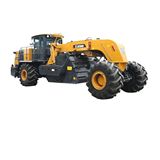
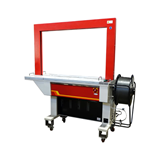

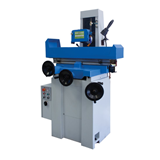
-160x160-state_article-rel-cat.png)

